
“There is no lie detector, neither man nor machine. People have been deceived by a myth that a metal box in the hands of an investigator can detect truth or falsehood.”
– United States Congress, House Committee on Government Operations, Subcommittee on Government Information and Foreign Operations
Wouldn’t it be great if you could tell when someone’s lying? Unfortunately, many conventional lie detection methods, including polygraph machines, are no more accurate than pure chance. Although polygraph machines are inaccurate in determining whether the subject is being deceptive, they monitor cardiovascular, respiratory, and electrodermal activity quite accurately!
A Brief Overview of Lie Detection Methods
Oneearly method of lie detectionwas hypnosis, used in an official capacity since the 1840s. Regarded as a state of artificially induced sleep, practitioners believed that people under hypnosis would be more truthful in this vulnerable (and suggestible) state. Aside from the questionable ethics of this technique, the results were unreliable.
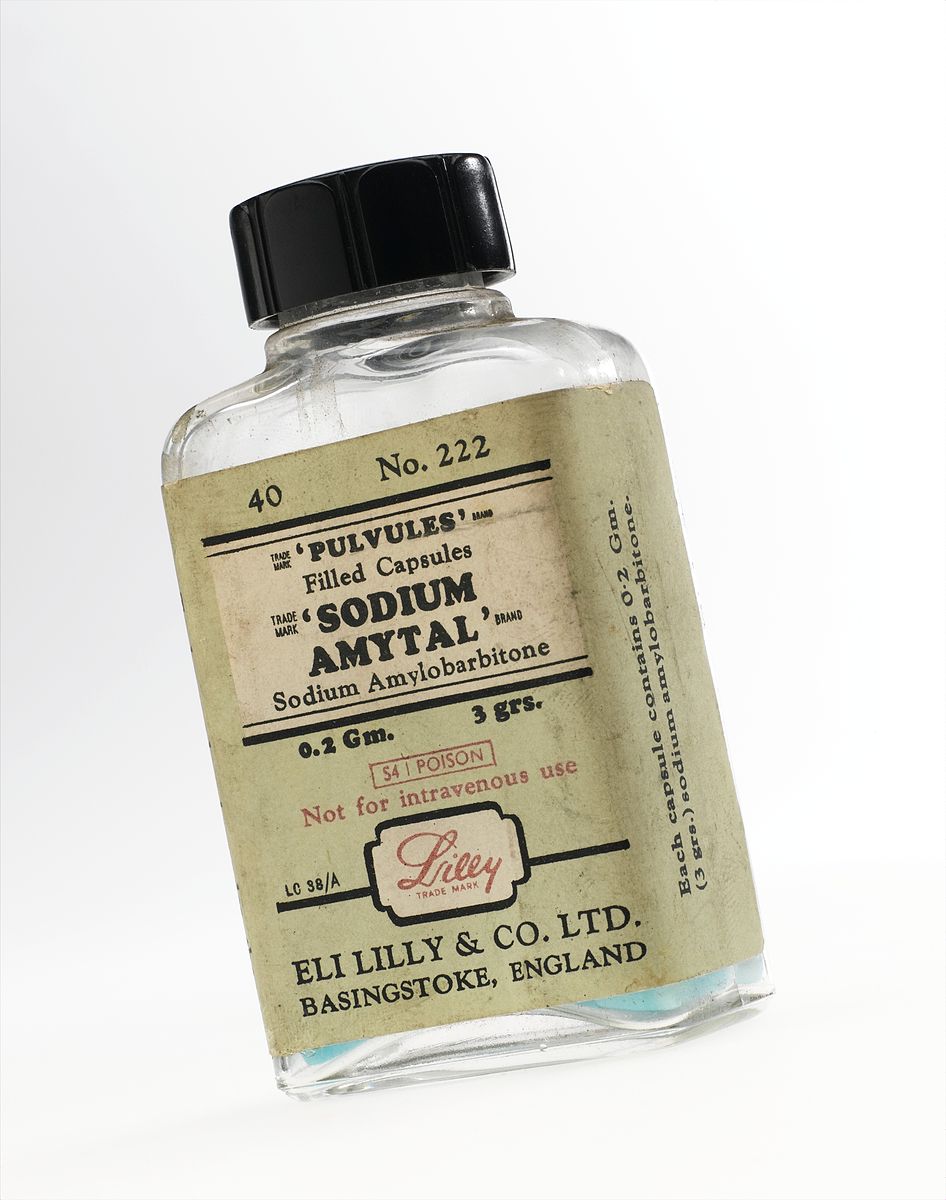
A bottle of sodium amytal, more commonly known as “truth serum”. This file comes fromWellcome Images, a website operated by Wellcome Trust, a global charitable foundation based in the United Kingdom. Licensed underCC BY-SA 4.0, viaWikimedia Commons.
In the 1910s, a doctor administering scopolamine (or “twilight sleep”) to patients noticed that it made them reveal private information. This led to a field known asnarcoanalysis, in which barbiturates like sodium amytal and sodium pentothal were administered to subjects under interrogation as “truth serum“. The thought behind this technique was that psychoactives lower a person’s defenses, making them more likely to be candid. Some forms of narcoanalysis are still employed today, but not in most established democratic societies.
History of the Lie Detector Test
In 1921, a California police officer named John A. Larson developed a device that could simultaneously monitor changes in blood pressure, heart rate, and respiration, called thepolygraphor, more colloquially, the lie detector. The workings of the device can be attributed to two earlier developments:
- In 1914, Italian psychologist Vittorio Benussi publishedDie Atmungssymptome der Lüge, his findings on how lying affects a person’s respiratory function
- In 1915, American psychologist William M. Marston invented a discontinuous systolic blood pressure test for detecting deception
Larson tested his device and procedures on real cases in his precinct, but his protégé, Leonarde Keeler, refined the testing procedures, made the device portable, and added an element that can test the galvanic skin response of the subject. (Ref. 1)
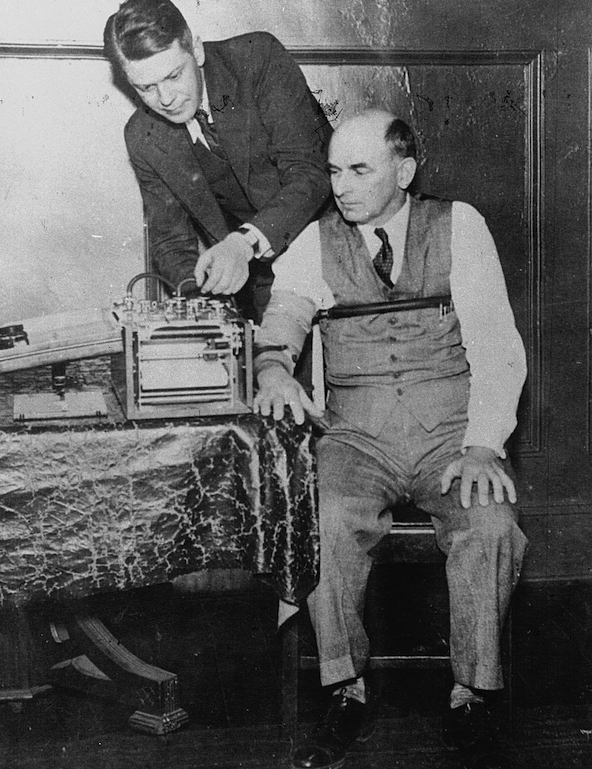
Leonarde Keeler administering a lie detector test to a prosecution witness in a 1937 trial. Image in the public domain, viaWikimedia Commons.
Putting Lie Detectors on Trial
In 1923, William M. Marston attempted to have the results from a lie detector test admitted as evidence in a court of law in what would become known as the landmark caseUnited States v. Frye. The court rejected the lie detector results,establishing the Frye standard, which would set a precedent for the admissibility of expert testimony in U.S. courts for years to come.
More than 40 years later, in 1965, the United States Committee on Government Operations conducted the first empirical review of the polygraph testing machine, determining it unreliable in detecting deception, as scathingly quoted at the beginning of this post. By this time, however, proponents of the lie detector test continued to roll full steam ahead, unfazed by the committee’s opinion.
Another notable update came in 1983, when then U.S. president Ronald Reagan issued the National Security Decision Directive 84, which authorized federal agencies to use polygraphs in their operations. In an interesting (and embarrassing) update, the president repealed the directive just three months later because of a negative review of the method by the Office of Technology Assessment.
The Basic Science Behind Polygraph Tests
Polygraph tests track three physiological responses commonly linked to deception:
- Cardiovascular activity
- Respiratory activity
- Electrodermal activity
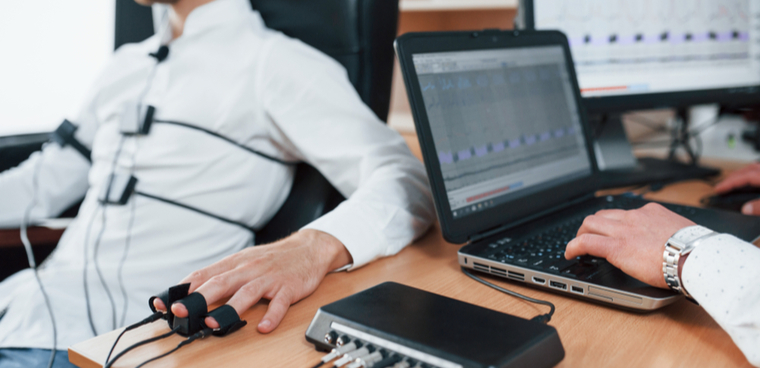
A modern-era polygraph test being administered. Image by Sherkiya Wedgeworth — Own work. Licensed underCC BY-SA 4.0, viaWikimedia Commons.
Cardiovascular Activity
Heart rate, blood pressure, and other cardiovascular processes can be affected by activities commonly associated with lying, such as reacting to a perceived or anticipated threat (“fight or flight” response) and increased mental activity. Polygraphs measure cardiovascular activity with an arm, wrist, or finger cuff equipped with a sphygmomanometer, which operates similar to those used in a medical setting.
Another cardiovascular measurement technique involves photoelectric plethysmographs, which are clipped to the subject’s finger or ear and send infrared light through the tissue. Photosensors then measure the light that is reflected or passed through the tissue. This is directly related to the amount of blood through which it passed before reaching the sensor. This enables the practitioner to measure changes in the blood volume without the need for a pressure cuff.
Respiratory Activity
Changes in respiratory activity are also thought to be an indicator of deception, although since breathing can be easily controlled via the central nervous system, this test is thought to be less reliable.
Respiratory activity is tested by fastening pneumatic rubber bellows around the subject’s thorax and abdomen. Inhalation and exhalation expand the bellows, prompting changes in the thoracic and abdominal circumference. Changes in the internal pressure are monitored with a pressure transducer.
Electrodermal Activity
Measuring electrodermal activity is considered the most sensitive and reliable of the three different tests. Why? The skin’s electrical resistance and conductance are largely determined by the eccirine glands, which are responsible for producing sweat and controlled by the sympathetic nervous system.
Electrodermal activity is measured via two electrodes attached to the subject’s palm or fingers. A small current is applied, which measures the skin’s conductance level and any changes to it, as well as the frequency of spontaneous responses, event-related response amplitude, and a variety of other factors.
Detecting Deception, Deceiving Results
The polygraph tracks its subject’s physiological responses in real time by a line graph with three values that correspond to the cardiovascular, respiratory, and electrodermal results. However, whether or not the physiological results can be applied to the psychological question of whether or not the subject is telling a lie? That is up for debate.
One of the main issues with polygraph test accuracy is physiological responses to the test can differ radically among individuals — or even the same individual under different circumstances. What’s more is that changes in a person’s breathing can affect their heart rate and galvanic skin response. People who work on mindfulness and breathing techniques can even have some control over these physiological responses (typically for stress control, not so they can be as deceptive as possible!).
A 2006 studyposits that the accuracy of polygraph tests averages at 54%, or barely above chance.
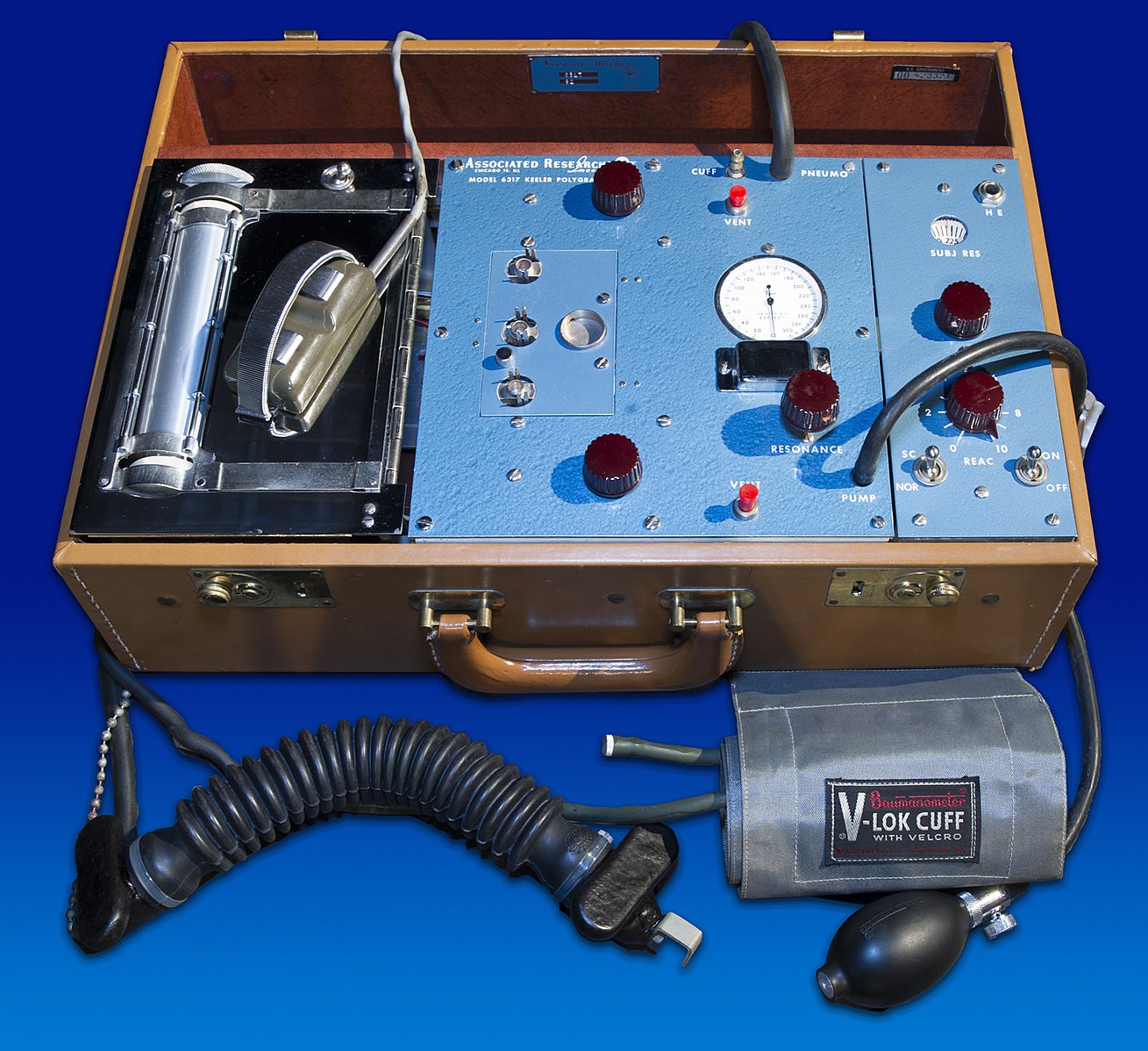
A 1960s-era polygraph machine. Image by the Federal Bureau of Investigation and available under the public domain viaWikimedia Commons.
So, if polygraph tests are unreliable, what options are better for detecting deception? Law enforcement and criminal justice professionals often used advanced interrogation techniques, in which the polygraph is used more as a psychological aid to the interrogator, not as an actual tried-and-true detector of lies. Some advanced interrogators even specialize in facial microexpressions and nonverbal cues. Although these techniques are hard to quantify, the investigators hunches could be much more reliable than “chance”.
Designing Better Physiological Testing Devices
Some blood pressure testing devices aren’t just used tokinda-sorta-maybedetect when people are telling lies. In fact, they are an integral part of the medical field — blood pressure is typically taken every time we visit the doctor’s office.
Some blood pressure measurement devices operate with the help ofpiezoresistive pressure sensors, a common MEMS device that relies on thepiezoresistive effect, which occurs when electrical resistance changes after an external force is applied to a semiconductor.
When designing a blood pressure monitoring device, it is important that the piezoresistive pressure sensor is able to accurately monitor the patient’s blood pressure, while operating within safe limits for the patient. Therefore, it is important that designers are able to describe the operation of these devices, predict their behavior, and test their performance before they are brought to market.
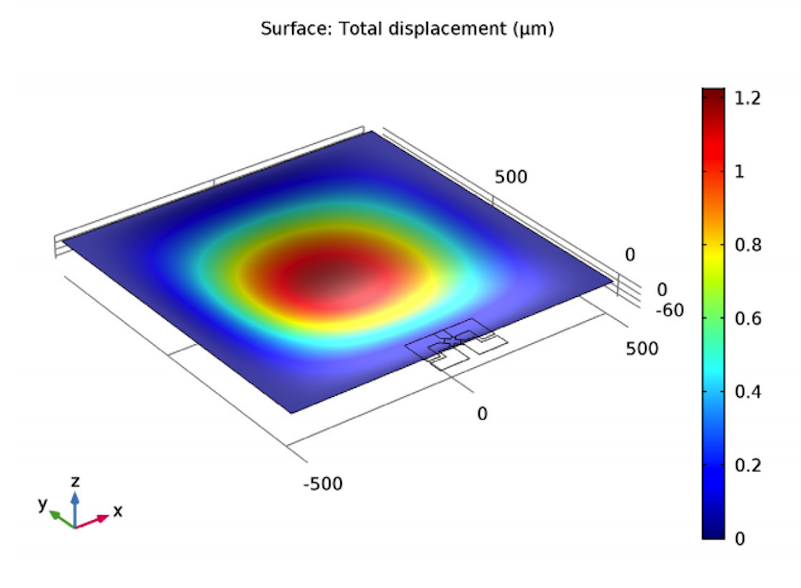
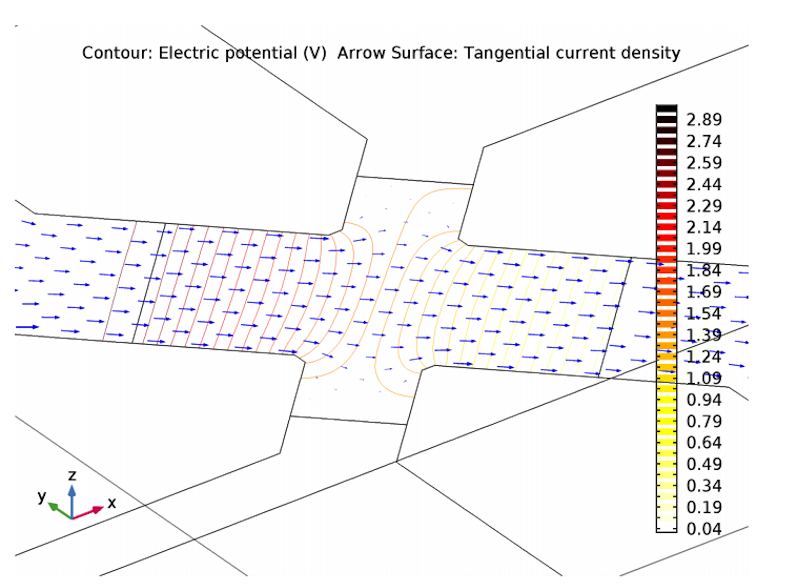
Multiphysics simulation can be used to look at the mechanical (left) and electrical (right) effects in a piezoresistive pressure sensor. Images from thePiezoresistive Pressure Sensor, Shell tutorial model.
Read About the Science Behind…
Reference
- J. Synnott et al., “A review of the polygraph: history, methodology and current status“,Crime Psychology Review, 2015.



Comments (0)